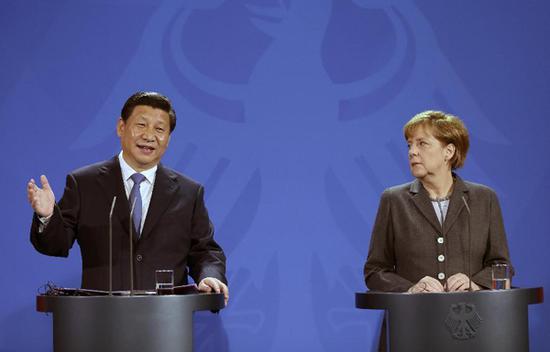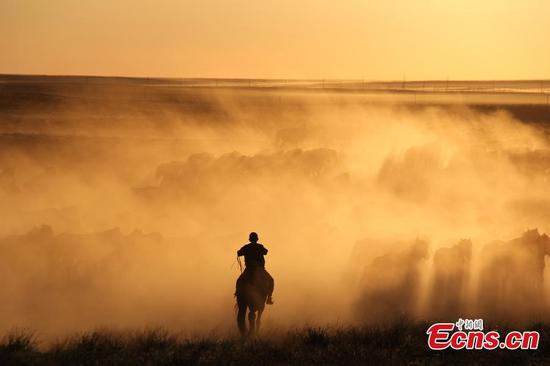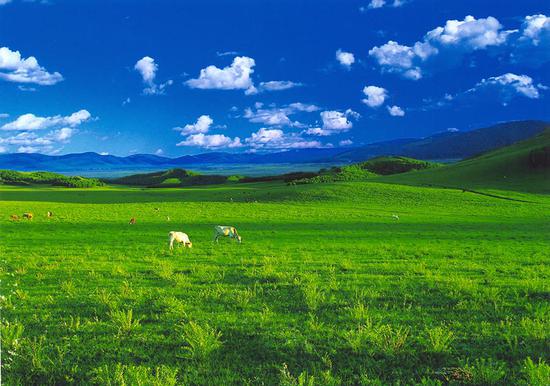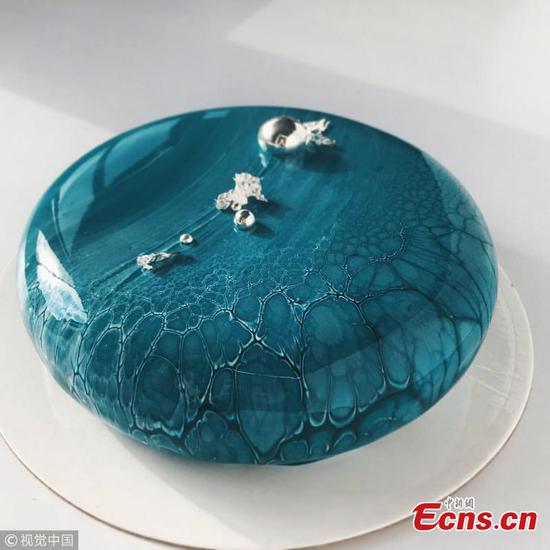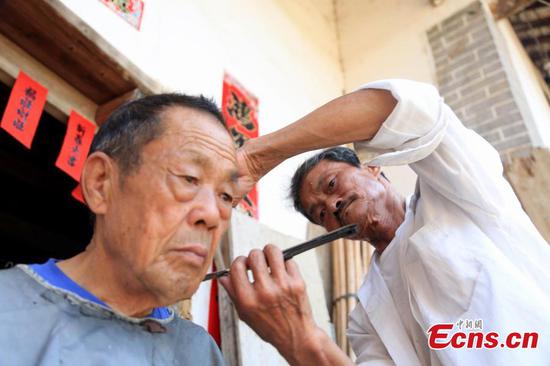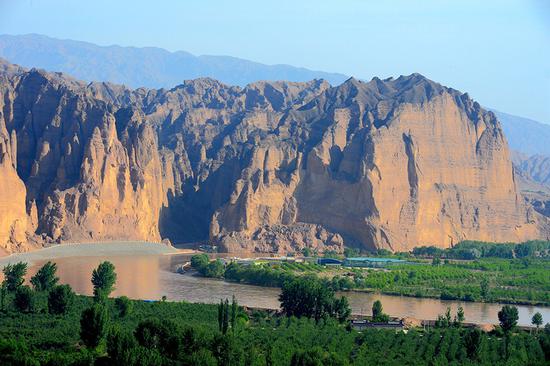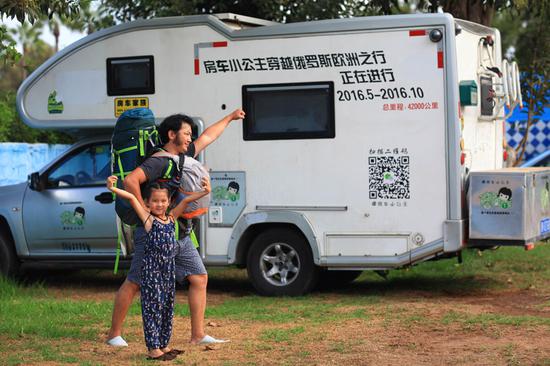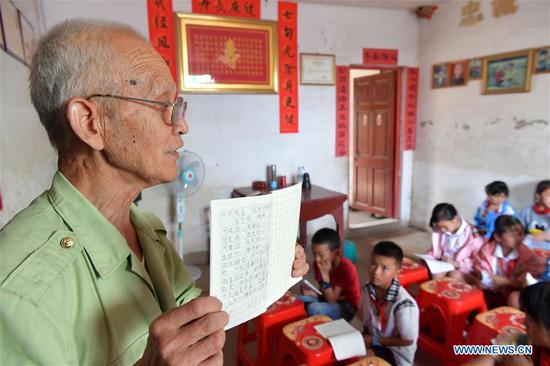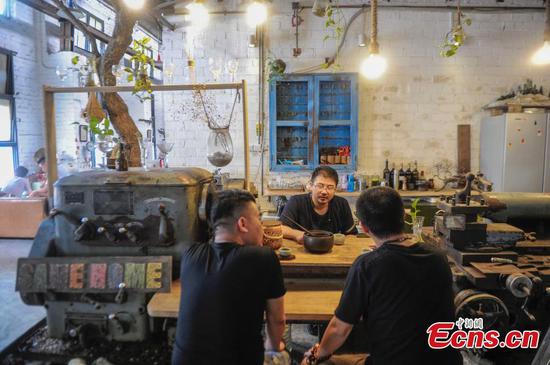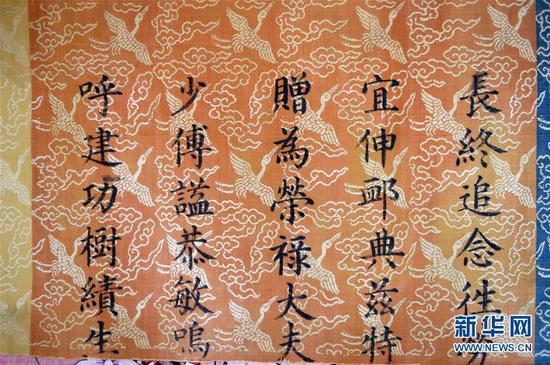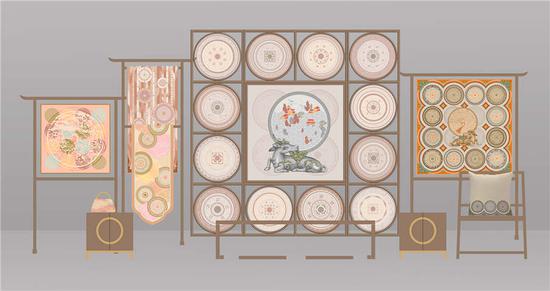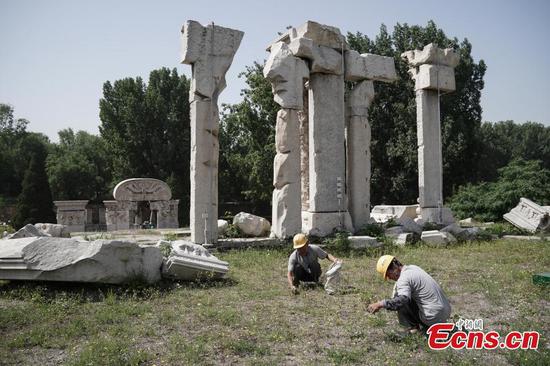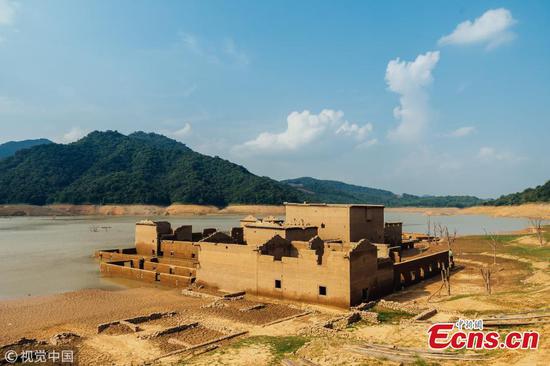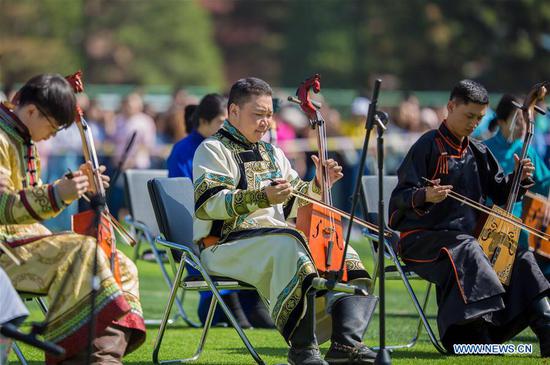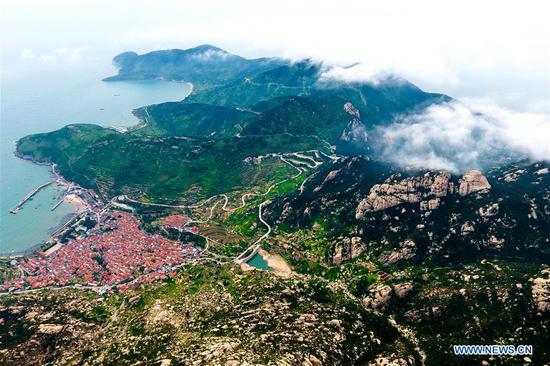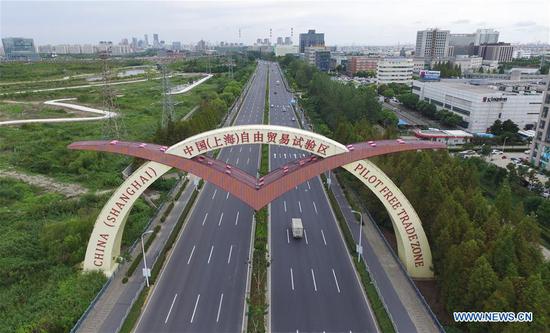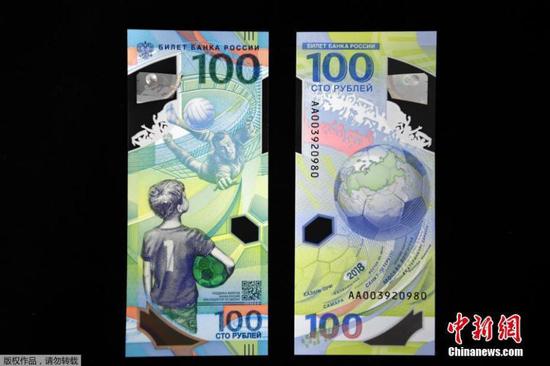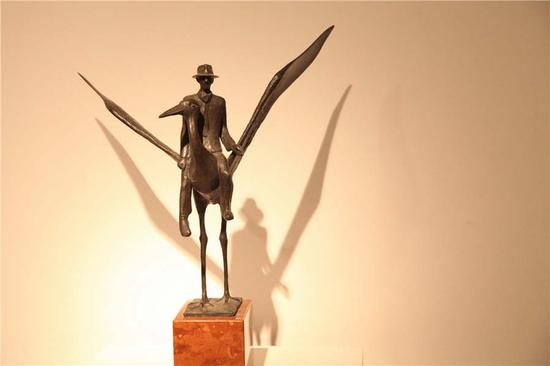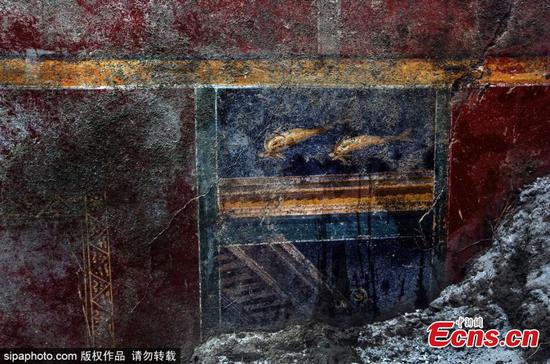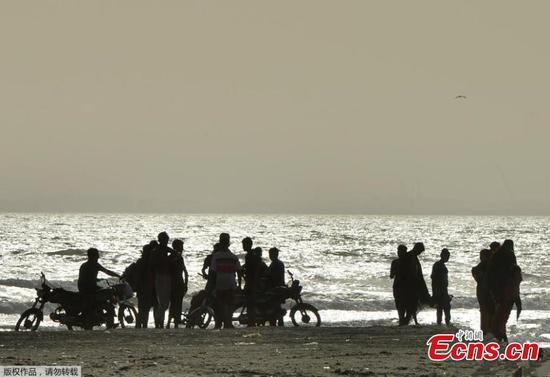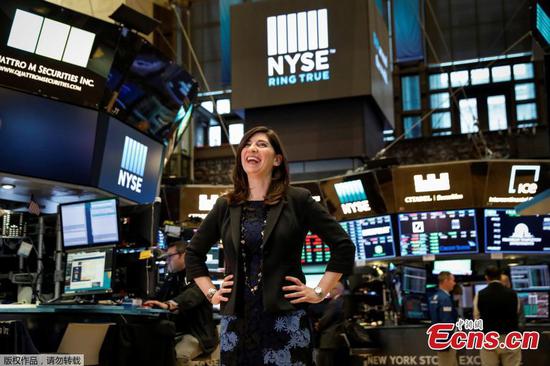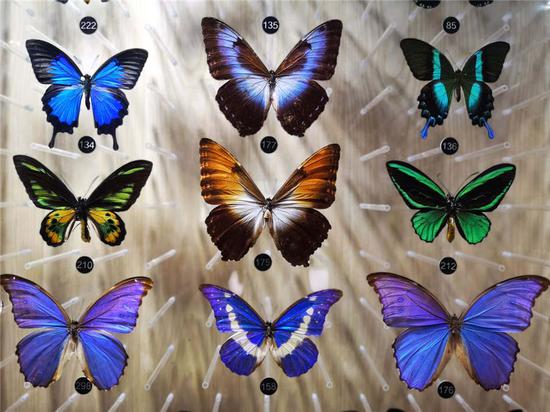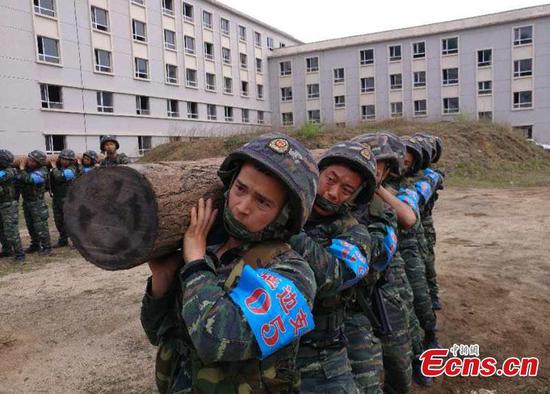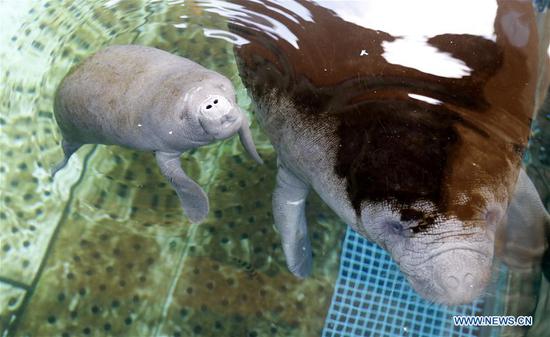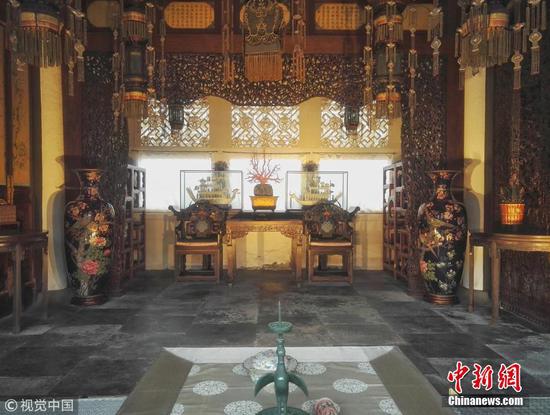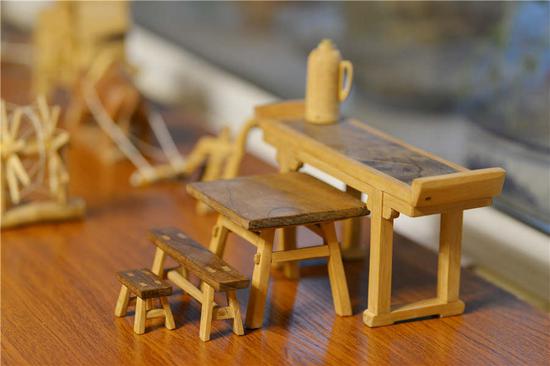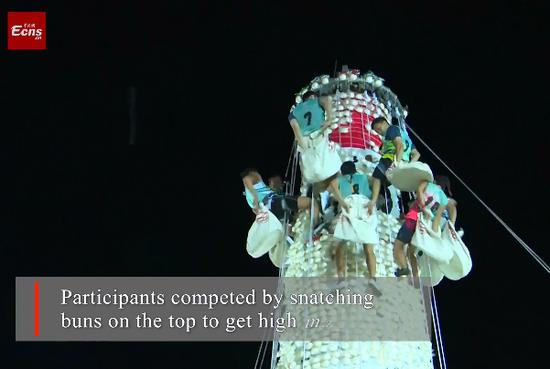
The Beijing show Echoes from the Volga River displays representative works of Peredvizhniki art from Moscow-based Tretyakov Gallery. (Photo by Jiang Dong/China Daily)
Tretyakov had a fascination for nature and collected landscape paintings. But he didn't consider a good landscape to be something with just "beautiful scenery, a magnificent composition, brilliant lighting or miracles".
"Let it be a dirty pool, but let it be real and poetic. There is poetry everywhere - and the task of an artist is to see and show this," he once explained in a letter to an artist.
The landscapes displayed at the Beijing show include pieces by Issac Levitan. Autumn Day, Sokolniki was painted by Levitan when the artist was 19.
Tretyakov first saw it at a Moscow exhibition for students of painting, sculpture and architecture in 1880. Captivated by the ineffable grief in it, he bought the painting.
Tretyakov also developed an interest in portraits. He commissioned painters to make portraits of famed Russian music composers, writers and creative people at the time. Those who sat for his projects included Lev Tolstoy, Anton Chekhov and Alexander Ostrovsky, all works presently on display at the Beijing show.
Tretyakov befriended many artists and helped them launch their careers by collecting their paintings and organizing exhibitions for them. He became acquainted with well-known realist painter Ilya Repin (1844-1930) over two decades, during which time he had acquired more than 50 paintings from Repin.
After Tretyakov died, Repin was commissioned by the Tretyakov gallery to execute a work in homage to the collector.
In the portrait finished in 1901, Tretyakov was presented standing in an exhibition hall of the same gallery. He is seen looking attentively at the paintings on the walls. This painting is now part of the Beijing exhibition.
"All alone, he undertook the entire job of creating the Russian painting school. What a great, incomparable achievement!" Repin once said.
Tretyakov kept the paintings he collected in his house. Because his art assets grew considerably over time, he had to reconstruct his house several times, finally converting it into a gallery.
In 1881, Tretyakov opened his home gallery to the public. In 1892, he donated it to the city government of Moscow. By that time, he owned 1,287 paintings, 518 drawings and nine sculptures by various Russian artists.
Tretyakov once told his daughter, Alexandra, "Since an early age, I knew what (is) acquired from society should return to society in some useful form. ... Living conditions should never allow a person to live idle."
Until his death in 1898, Tretyakov served as the gallery trustee, helping enrich the collection and publish its annual catalogs. His last words were: "Take care of the gallery."
IF YOU GO
9 am-5 pm, closed on Mondays, through July 26. National Museum of China, east of Tian'anmen Square, Beijing. 010-6511-6188/6400.







